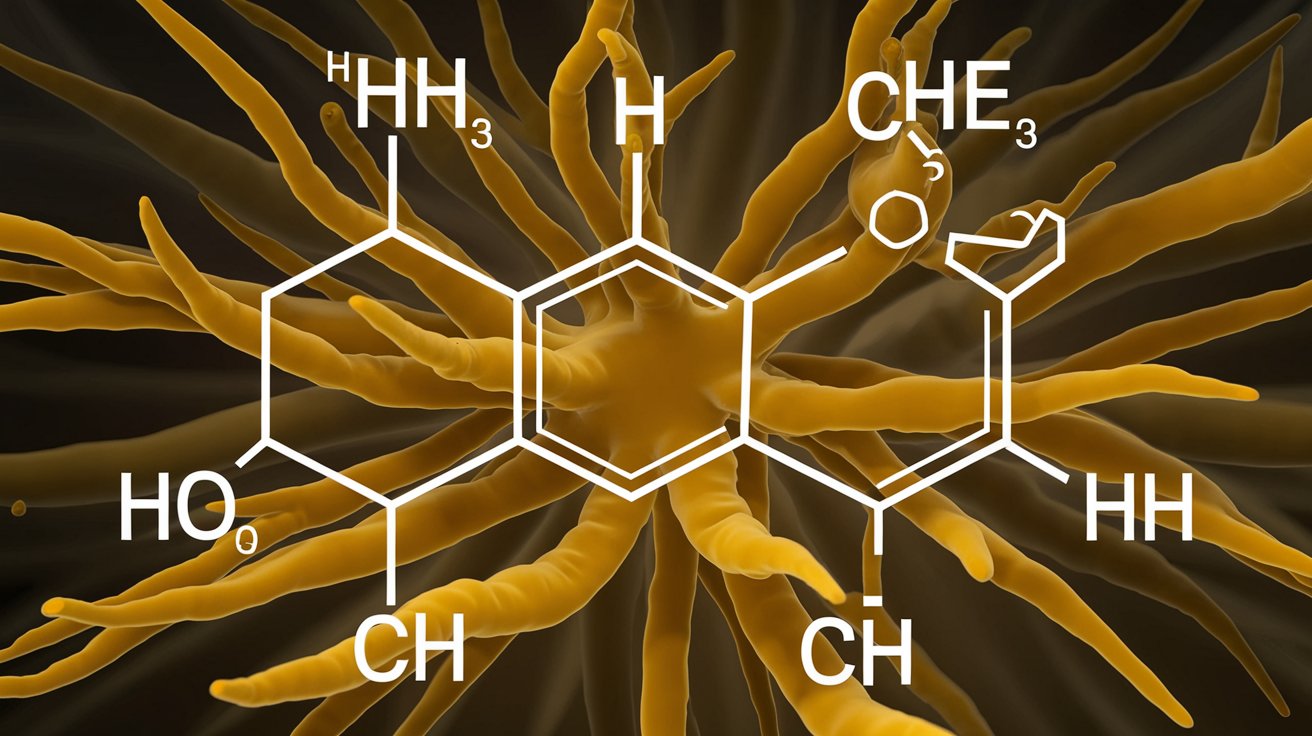
What is Cerulenin? Cerulenin is a natural antibiotic produced by the fungus Cephalosporium caerulens. This compound is known for its ability to inhibit fatty acid synthesis, making it a valuable tool in scientific research. Why is Cerulenin important? It plays a crucial role in studying metabolic processes and has potential applications in treating obesity and cancer. How does Cerulenin work? It targets and inhibits the enzyme fatty acid synthase (FAS), which is essential for lipid biosynthesis. What are the benefits of Cerulenin? Researchers use it to understand lipid metabolism better and explore new therapeutic avenues. Is Cerulenin safe? While useful in research, it requires careful handling due to its potent biological activity.
Key Takeaways:
- Cerulenin, a compound from bacteria, can stop the production of fats in cells, which may help in cancer research and treatment, as well as in making biofuels and improving crop nutrition.
- Cerulenin's impact goes beyond medicine, with potential applications in biotechnology and environmental science, offering solutions for various challenges, from developing new antibiotics to studying climate change's impact on lipid metabolism.
What is Cerulenin?
Cerulenin is a fascinating compound with a unique history and a variety of applications. This natural antibiotic, produced by the bacterium Streptomyces cerevisiae, has been the subject of extensive research due to its ability to inhibit fatty acid synthesis. Let's dive into some intriguing facts about cerulenin.
- Cerulenin was first isolated in 1966 by Japanese scientists.
- It is a secondary metabolite produced by Streptomyces cerevisiae.
- The compound has a distinctive structure featuring an epoxide group.
- Cerulenin inhibits fatty acid synthase (FAS), an enzyme crucial for lipid biosynthesis.
- It has been used to study the regulation of fatty acid metabolism in cells.
- Cerulenin's inhibition of FAS can lead to apoptosis, or programmed cell death, in certain cancer cells.
- The compound has shown potential as an anti-cancer agent in preclinical studies.
- Cerulenin can also inhibit the growth of fungi by disrupting their lipid metabolism.
- It has been used as a tool to understand the role of lipids in cell signaling.
- Cerulenin's effects on lipid metabolism have implications for obesity research.
Cerulenin in Medical Research
Cerulenin has been a valuable tool in medical research, particularly in the study of metabolic diseases and cancer. Researchers have utilized this compound to uncover new insights into disease mechanisms and potential treatments.
- Cerulenin has been used to study the metabolic pathways involved in diabetes.
- It has helped researchers understand the role of fatty acids in insulin resistance.
- The compound has been investigated for its potential to treat metabolic syndrome.
- Cerulenin's inhibition of FAS has been linked to reduced tumor growth in animal models.
- It has shown promise in targeting cancer stem cells, which are often resistant to conventional therapies.
- Researchers have explored cerulenin's potential to enhance the efficacy of chemotherapy.
- The compound has been studied for its ability to induce autophagy, a cellular process that can lead to cancer cell death.
- Cerulenin has been used to investigate the role of lipids in neurodegenerative diseases like Alzheimer's.
- It has shown potential in reducing inflammation by modulating lipid signaling pathways.
- The compound has been explored for its effects on lipid metabolism in liver diseases.
Cerulenin in Biotechnology
Beyond medical research, cerulenin has found applications in biotechnology. Its unique properties make it a valuable tool for various biotechnological processes and innovations.
- Cerulenin has been used to enhance the production of biofuels by manipulating lipid metabolism in microorganisms.
- It has been employed in the development of new antibiotics by targeting bacterial lipid synthesis.
- The compound has been utilized in the production of high-value lipids for industrial applications.
- Cerulenin has been used to study the regulation of lipid biosynthesis in plants.
- Researchers have explored its potential to improve the nutritional content of crops by altering their lipid profiles.
- The compound has been investigated for its role in enhancing the production of omega-3 fatty acids in algae.
- Cerulenin has been used to develop new strategies for controlling pests by targeting their lipid metabolism.
- It has been employed in the study of lipid-based drug delivery systems.
- The compound has been used to investigate the role of lipids in cell membrane structure and function.
- Cerulenin has been explored for its potential to improve the efficiency of bioprocesses in the pharmaceutical industry.
Cerulenin in Environmental Science
Cerulenin's impact extends to environmental science, where it has been used to study and address various ecological challenges. Its ability to influence lipid metabolism has made it a valuable tool in this field.
- Cerulenin has been used to study the effects of lipid metabolism on microbial communities in soil.
- It has been employed in the investigation of lipid-based pollutants and their impact on ecosystems.
- The compound has been used to explore the role of lipids in the adaptation of organisms to environmental stress.
- Researchers have utilized cerulenin to study the impact of lipid metabolism on the biodegradation of pollutants.
- It has been investigated for its potential to enhance the bioremediation of oil spills by promoting lipid metabolism in microorganisms.
- Cerulenin has been used to study the effects of lipid metabolism on the growth and survival of marine organisms.
- The compound has been employed in the investigation of lipid-based toxins produced by harmful algal blooms.
- Researchers have explored cerulenin's potential to mitigate the impact of climate change on lipid metabolism in plants.
- It has been used to study the role of lipids in the formation and stability of biofilms in aquatic environments.
- Cerulenin has been investigated for its potential to improve the sustainability of aquaculture by modulating lipid metabolism in fish.
Final Thoughts on Cerulenin
Cerulenin, a fascinating compound, has a lot to offer. Known for its ability to inhibit fatty acid synthesis, it’s been a valuable tool in scientific research. This natural antibiotic, derived from a fungus, has shown promise in cancer research, obesity studies, and even antibiotic resistance. Its unique properties make it a subject of ongoing interest in the medical and scientific communities.
Understanding cerulenin’s potential can lead to breakthroughs in various fields. Whether it’s developing new treatments or gaining insights into metabolic processes, cerulenin continues to be a key player. As research progresses, who knows what other secrets this compound might reveal?
Stay curious and keep exploring the wonders of science. Cerulenin is just one example of how nature’s molecules can impact our understanding of health and disease. Keep an eye out for more exciting discoveries in the world of biochemistry!
Frequently Asked Questions
Was this page helpful?
Our commitment to delivering trustworthy and engaging content is at the heart of what we do. Each fact on our site is contributed by real users like you, bringing a wealth of diverse insights and information. To ensure the highest standards of accuracy and reliability, our dedicated editors meticulously review each submission. This process guarantees that the facts we share are not only fascinating but also credible. Trust in our commitment to quality and authenticity as you explore and learn with us.


